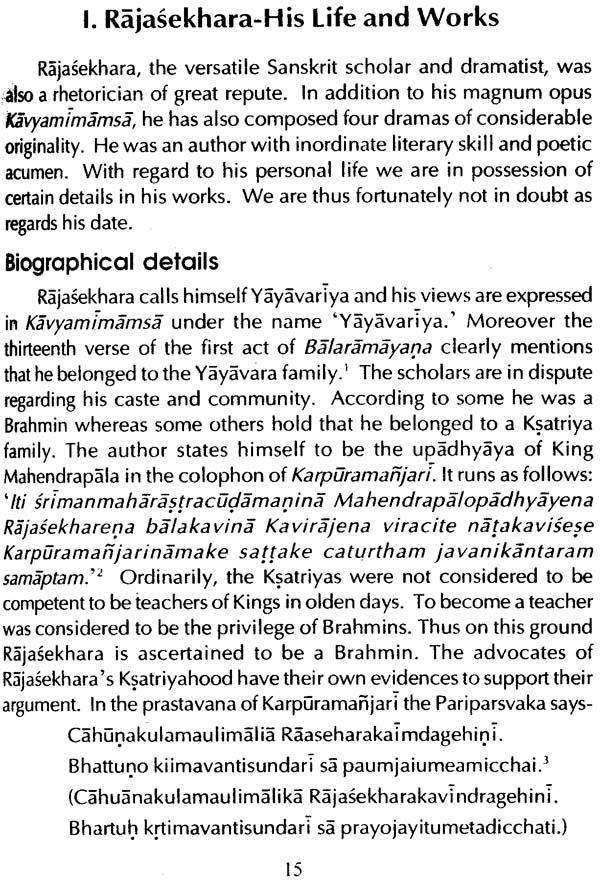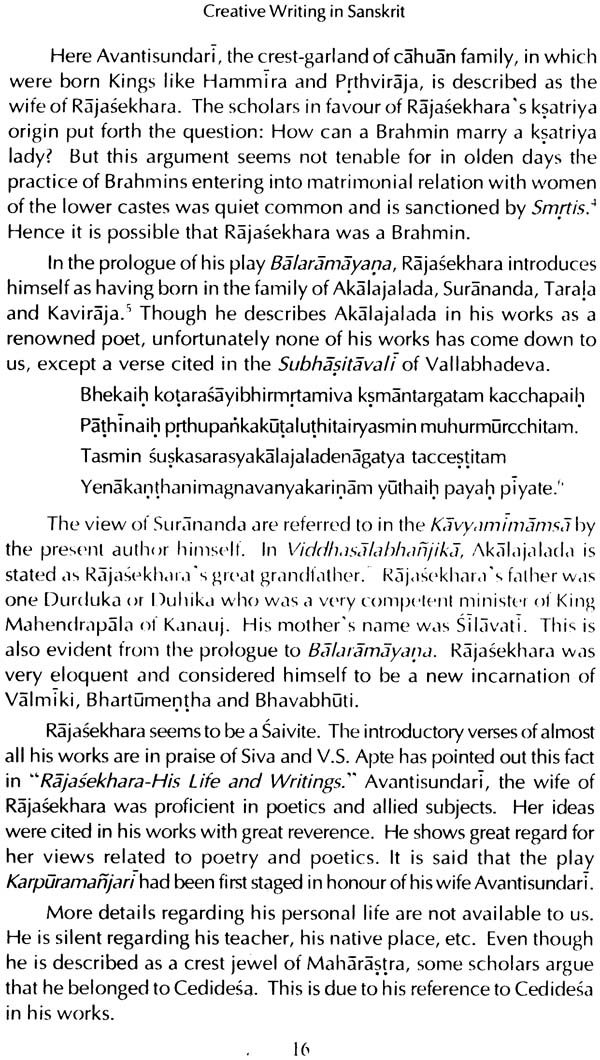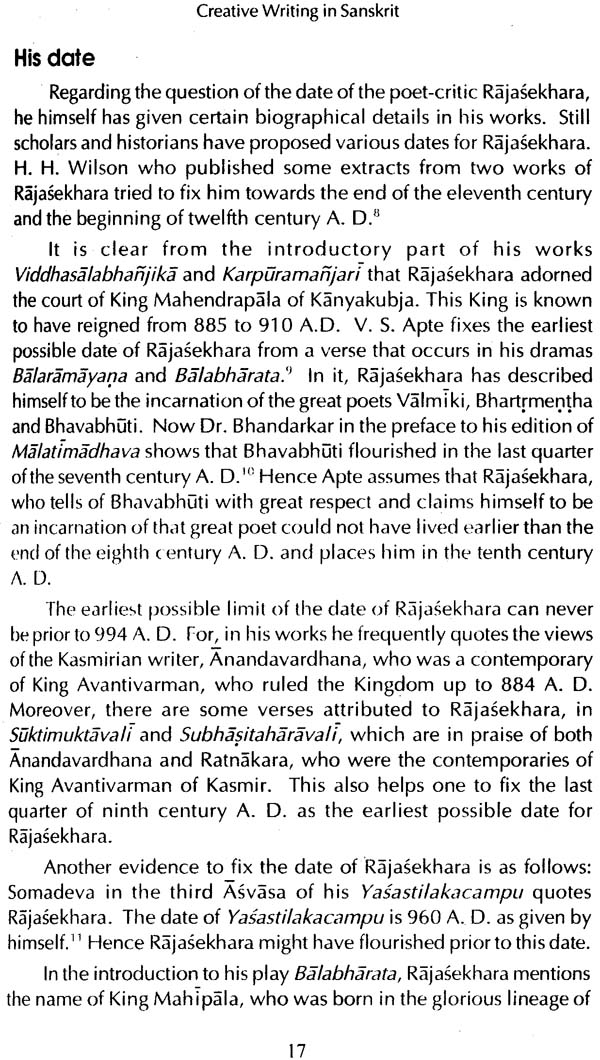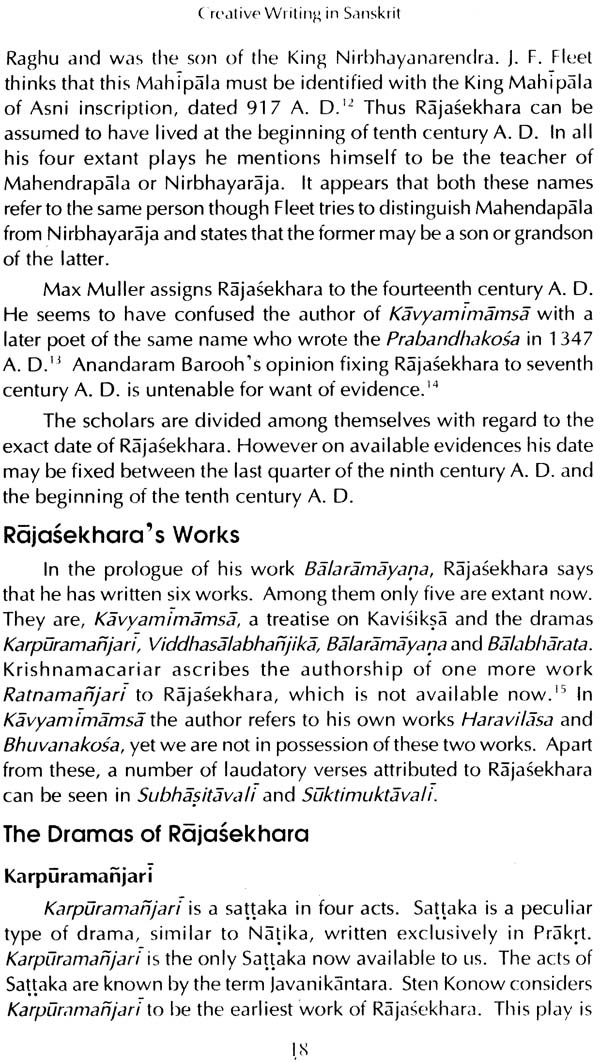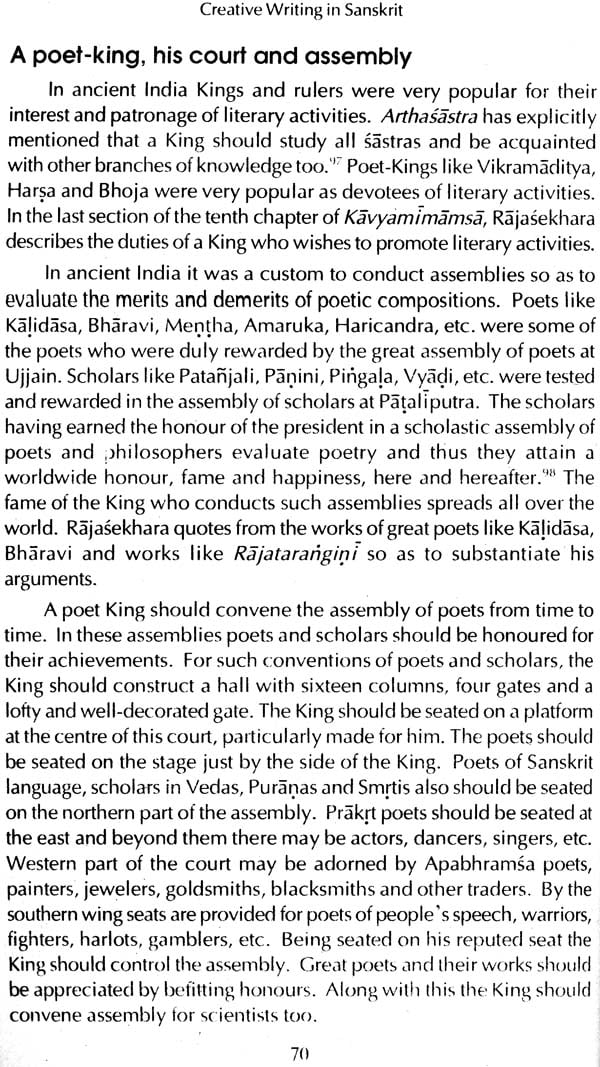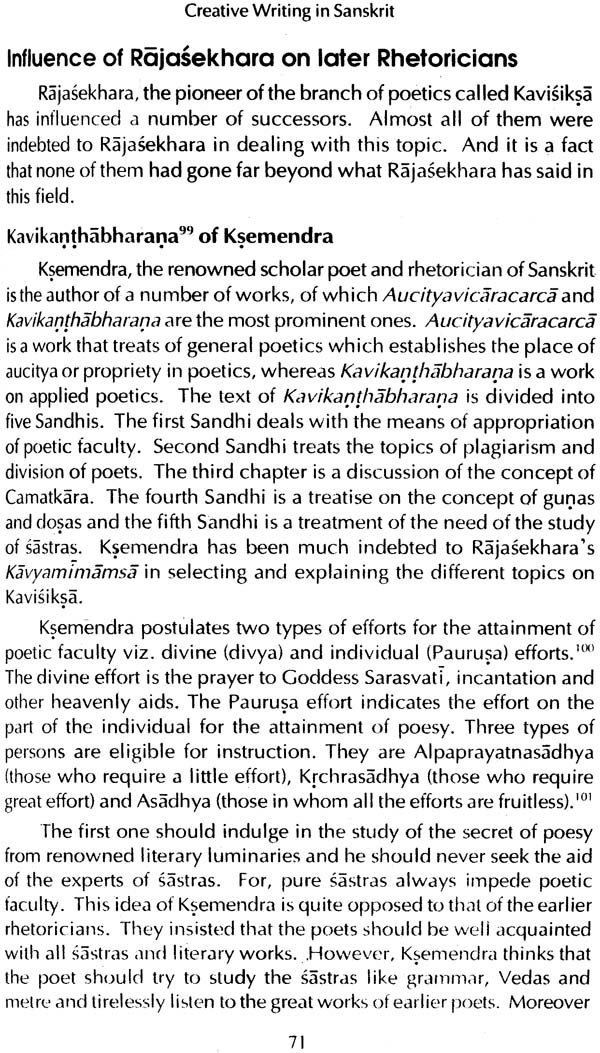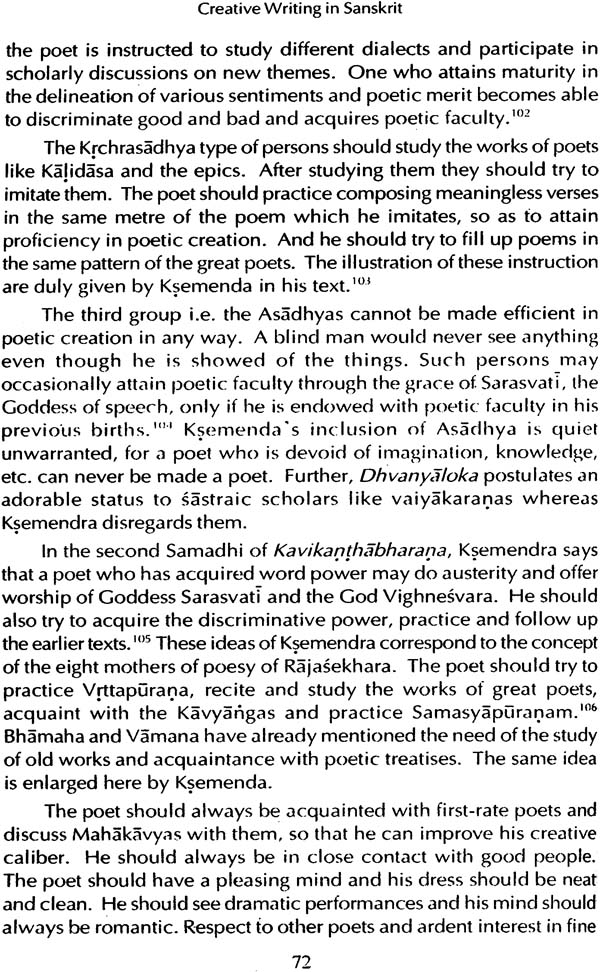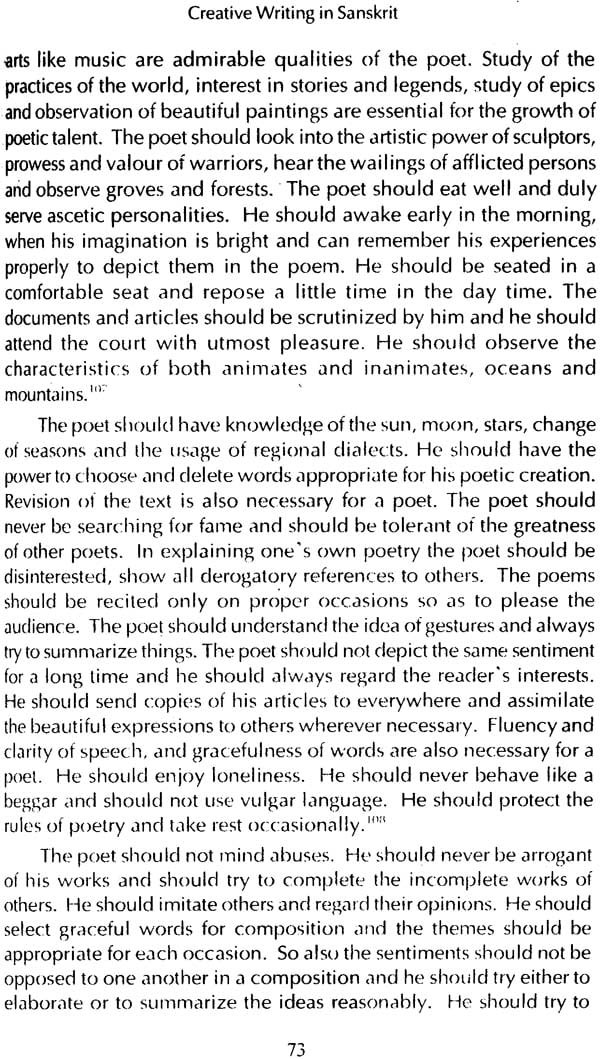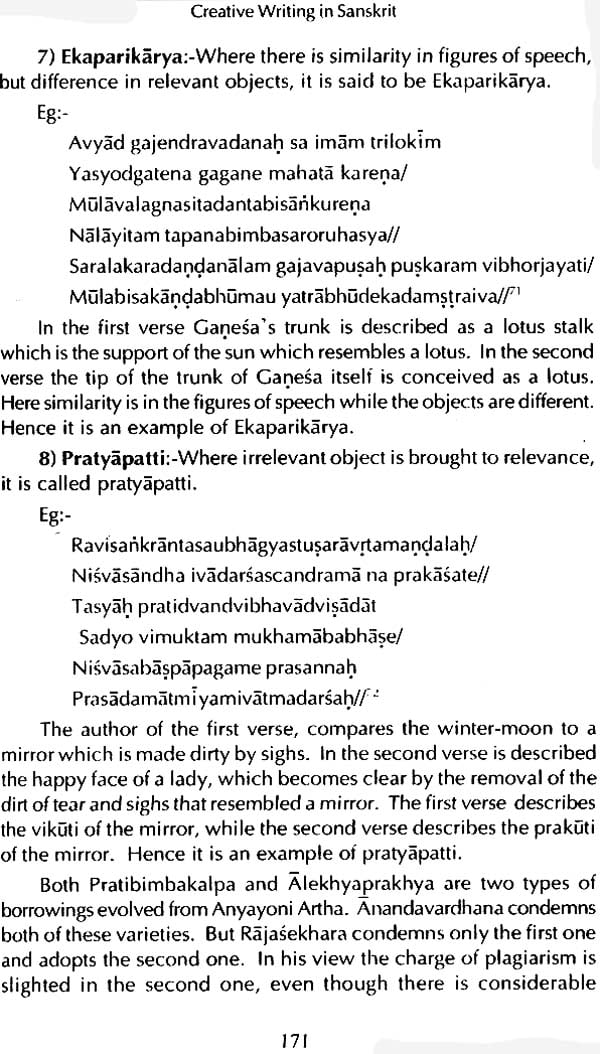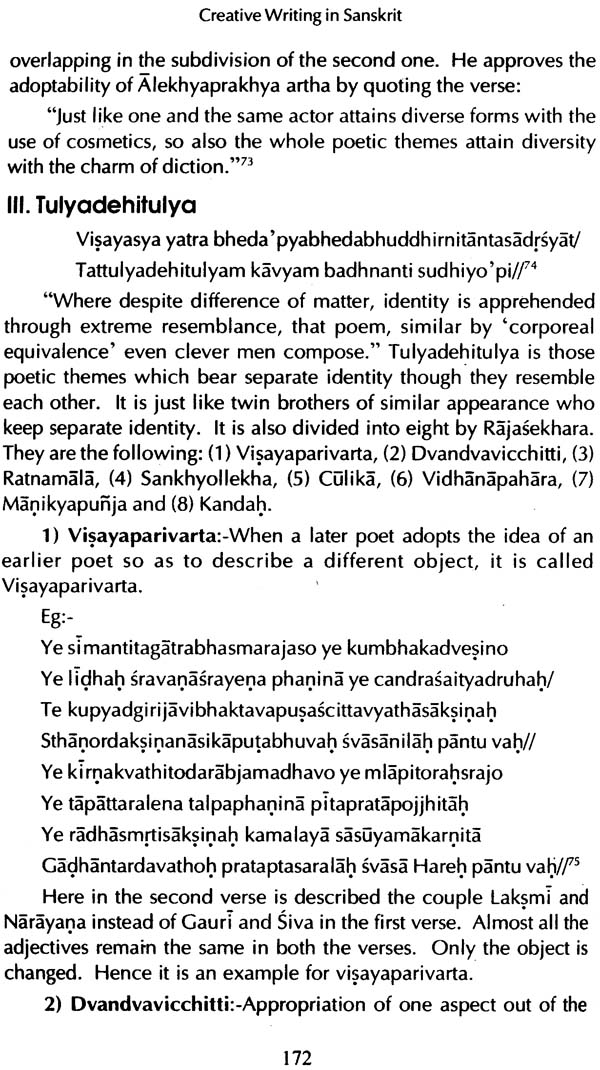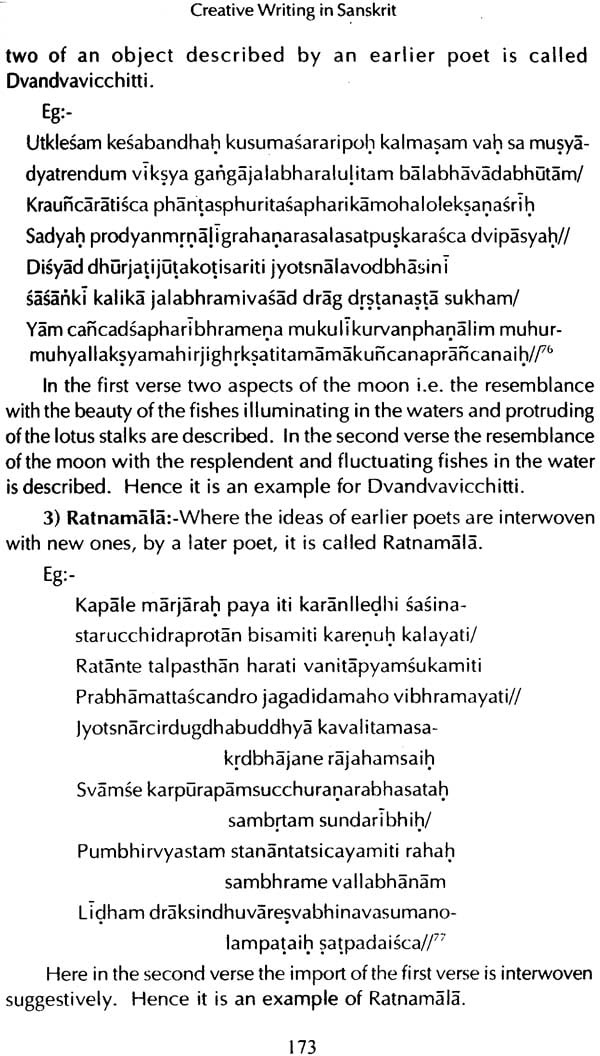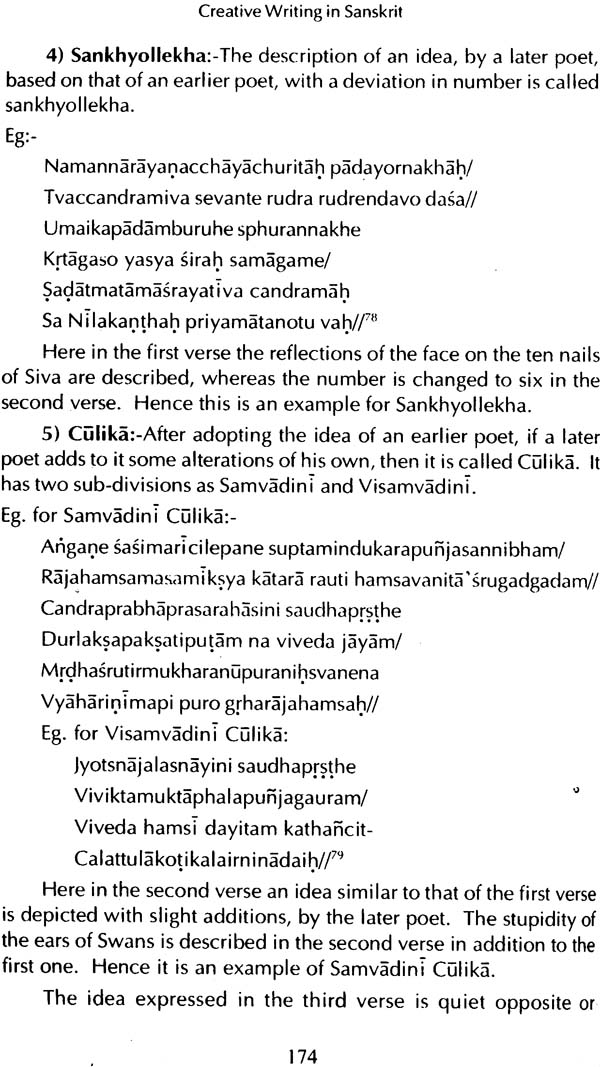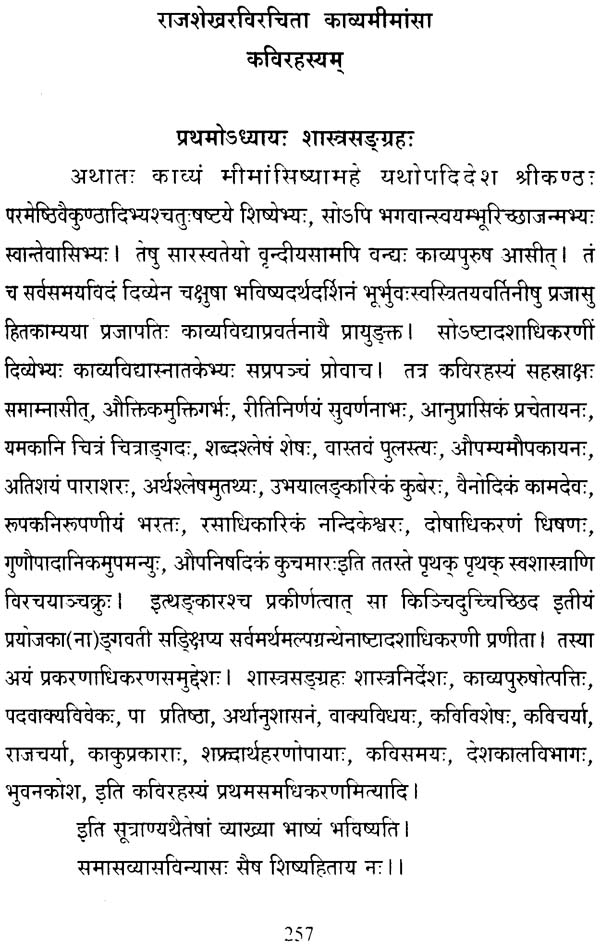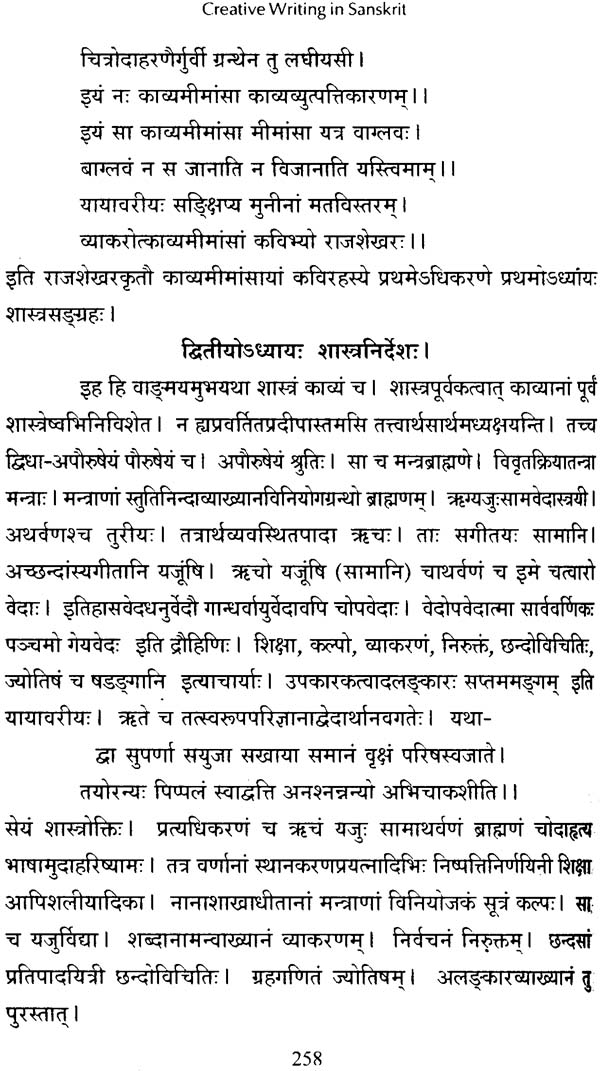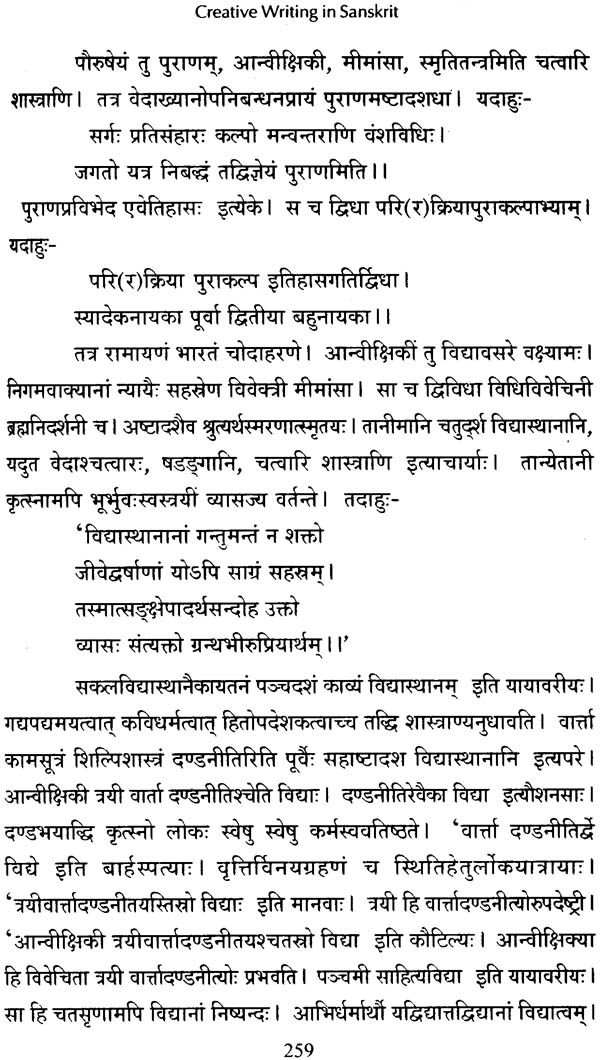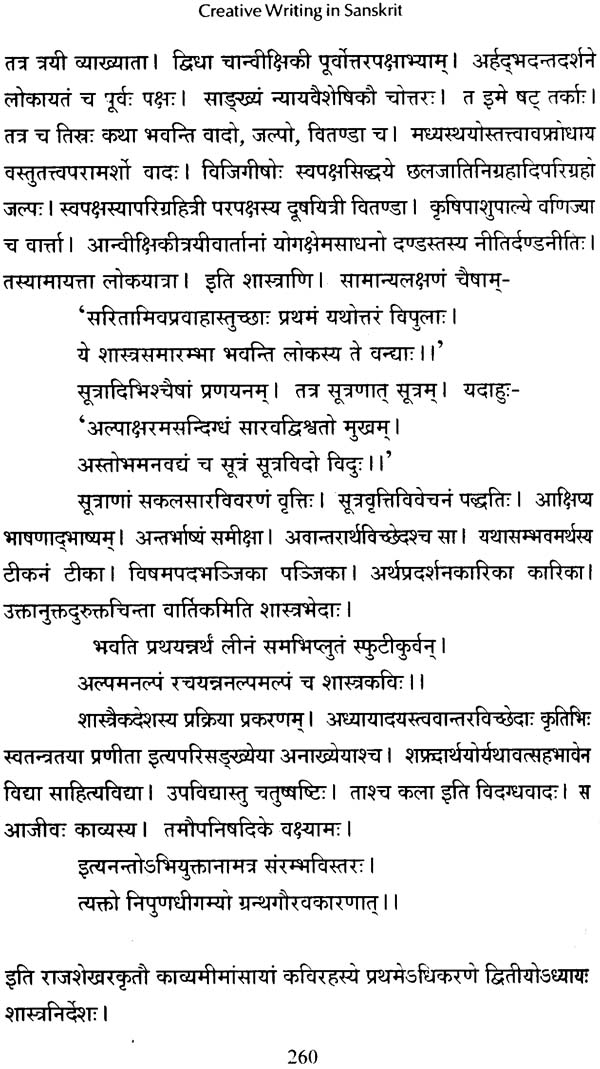
Creative Writing in Sanskrit (Studies in Rajasekhara's Kavyamimamsa)
Book Specification
| Item Code: | NAH457 |
| Author: | Dr. V. K. Vijayan |
| Publisher: | Publication Division University of |
| Language: | Transliteration and English Translation |
| Edition: | 2012 |
| ISBN: | 9788177481761 |
| Pages: | 372 |
| Cover: | Paperback |
| Other Details | 8.5 inch x 5.5 inch |
| Weight | 440 gm |
Book Description
Kavyamimamsa of Rajasekhara is a unique work in Sanskrit poetics. Even though the work does not put forth any new literary theory, it contains many novel ideas regarding poetic fancies, plagiarism, pratibha and kavisiksa. Rajasekhara, the author is not a mere critic but a poet of remarkable genius too. The text is conceived as a major compendium- like-work containing eighteen adhikarana-s dealing with all the aspects of poetics in a comprehensive manner.
The style of presentation can be seen as influenced by those of Arthasastra and Kamasastra. Unfortunately the first adhikarana, which is named as Kavirahasya, alone is available for us.
Kavyamimamsa of Rajasekhara is a unique work in Sanskrit poetics. even though the work does not put forth any new literary theory, it contains many novel ideas regarding poetic fancies, plagiarism, pratibha and kavisiksa. Rajasekhara, the author is not a mere critic but a poet of remarkable genius too. The text is conceived as a major compendium-like-work containing eighteen adhikaran-s dealing with all the aspects of poetics in a comprehensive manner. The style of presentation can be seen as influenced by those of Arthasastra and Kamasastra. Unfortunately the first adhikarana, which is named as Kavirahasya, alone is available for us.
A serious analytical study of this significant work in Sanskrit poetics has not come so far. The present work titled Creative Writing in Sanskrit (Studies in Rajasekhara's Kavyamimamsa) is the first of its kind in this field. Dr. V.K. Vijayan, the author has carefully analysed all the important aspects and has succeeded in critically evaluating the work.
The reproduction of the Gaekwad Oriental Series edition of the Kavyamimamsa text (which is out of print) goes to enhance the research value of the work.
I am extremely delighted to introduce this work as the 45th number in the Calicut University Sanskrit Series. I am sure that the scholarly world would receive the work with much enthusiasm and delight.
Kavyamimamsa is one of the prominent texts on Sanskrit poetics authored by Rajasekhara. Rajasekhara does not subscribe himself to any of the established theories of Sanskrit poetics, but he examines and evaluates various theories of Sanskrit poetics in a critical way. Kavyamimamsa is more a text on Kavisiksa than on Sanskrit poetics. The text of Kavyamimamsa, as is evident from the text itself was proposed to be a voluminous text in eighteen Adhikaranas dealing with all the known topics of poetics. Unfortunately the extant text of Kavyamimamsa contains only the first Adhikarana of that proposed text.
The present text of Kavyamimamsa, i.e the first Adhikarana of the proposed eighteen Adhikaranas is named Kavirahasya and is divided into eighteen chapters. It is a practical handbook for budding poets. It is written in prose intermingled with verse. The style of the text is that of Kamc1sutra and Arthasastra. The harmonious amalgamation of both theoretical and practical aspects of making of poetry makes Kavyamimamsa unique work among other works on Sanskrit Poetics.
The present book is an attempt to analyze and examine the various theories discussed in Kavyamimamsa. The first chapter gives an account of Rajasekhara and his works. The second chapter is a brief account of the contents of the text. The third chapter is named 'Instructions to poets' and is a brief description of Kavisiksa in Sanskrit poetics. This chapter highlights the prominence of Kavisiksa in Sanskrit poetics. The fourth and fifth chapters deal with the concepts of poetic conventions and plagiarism. The sixth chapter deals with the concepts of ancient Indian geography and time. The descriptions of geographical regions and seasonal changes in consonance with the sentiments are discussed in this chapter. The seventh chapter evaluates Rajasekhara's approach to poetry, his ideas of poet and critic. Last part of the book is a conclusion. A select bibliography of the books is given at the end. For the convenience of the readers the text of Kavyamimamsa reproduced here as appendix at the last past of this book.
In this connection I wish to express my heartfelt obligation to Dr.K.N.N.Elayath for the encouragement and guidance which I promptly received from him as my supervising teacher. I thankfully remember late Dr.M.S.Menon, formerly the Head of the Department of Sanskrit, for introducing me to this topic. I am much indebted to late Dr. N.V.Krishna Warrier for his valuable suggestions in writing this thesis. Thanks are due to Dr.N.K.Sundareswaran, Head of the Department of Sanskrit and the Teachers of the Department of Sanskrit, University of Calicut who encouraged me for the completion of this work.
I express my sincere gratitude to authorities of University of Calicut for including and publishing this book in the Calicut University Sanskrit Series.
I am thankful to Mr. Omprakash. V, Publication Officer, University of Calicut for supervising the publication of this book.
| Foreword | 7 | |
| Introductory Note | 9 | |
| Preface | 13 | |
| 1 | Rajasekhara - His Life and Works | 15 |
| 2 | General features and a Brief Statement of the contents of Kavyamimamsa | 28 |
| 3 | Instructions to the Poet | 42 |
| 4 | The Concept of Kavisamaya | 86 |
| 5 | Concept of Plagiarism | 148 |
| 6 | The Concept of Geography and Seasons | 188 |
| 7 | Rajasekhara's Concept of Poet, Poetry and Critic | 215 |
| Conclusion | 243 | |
| Bibliography | 247 | |
| Appendix - Rajasekhara Kavyamimamsa | 257 |
